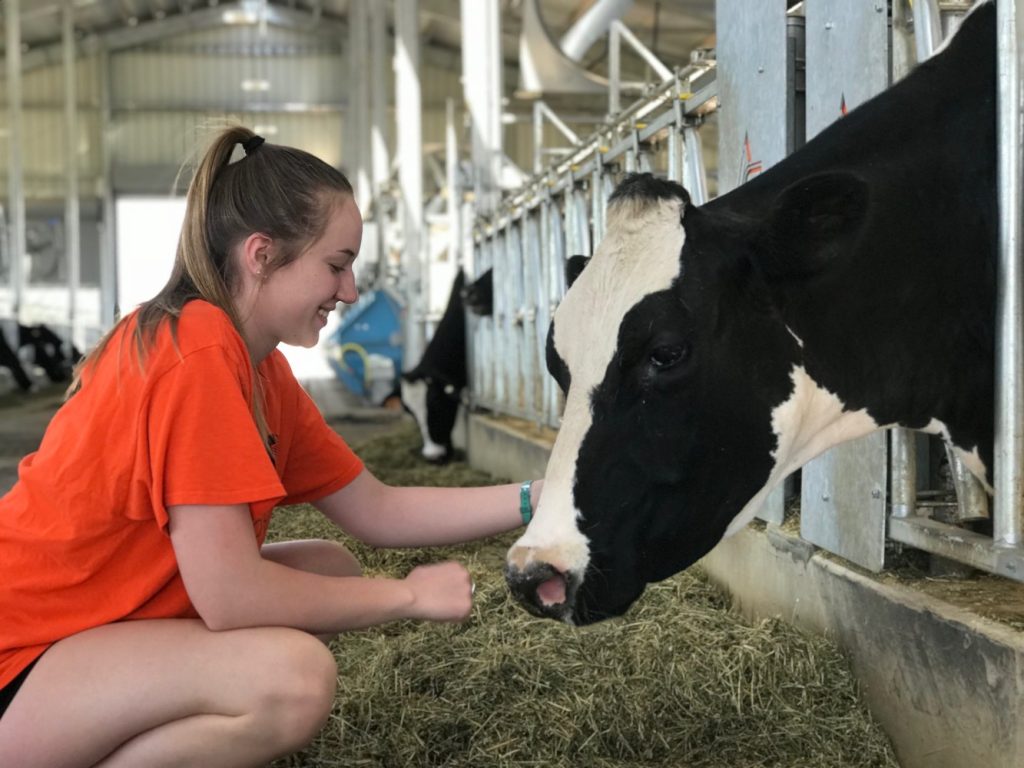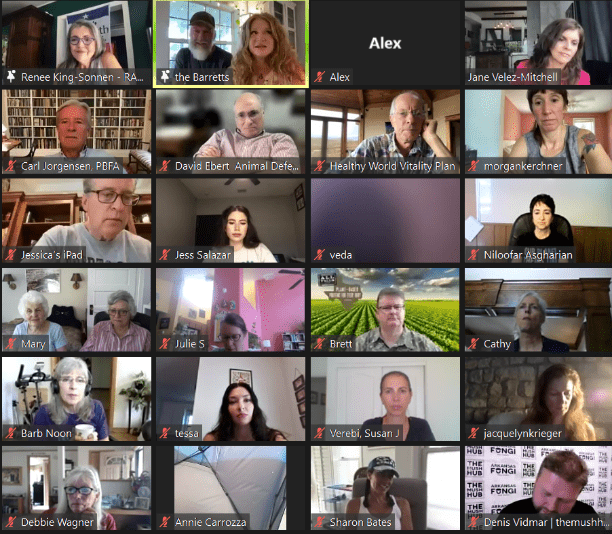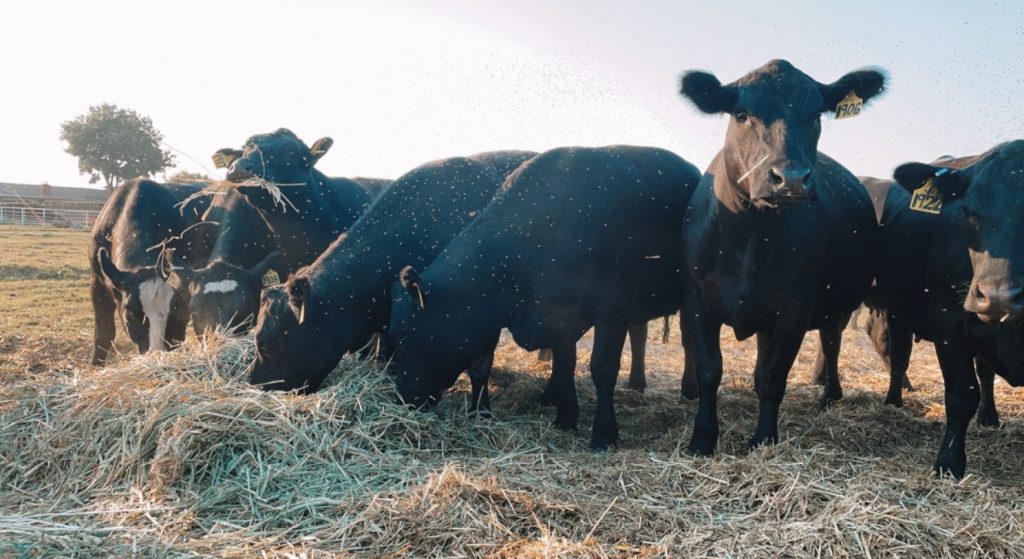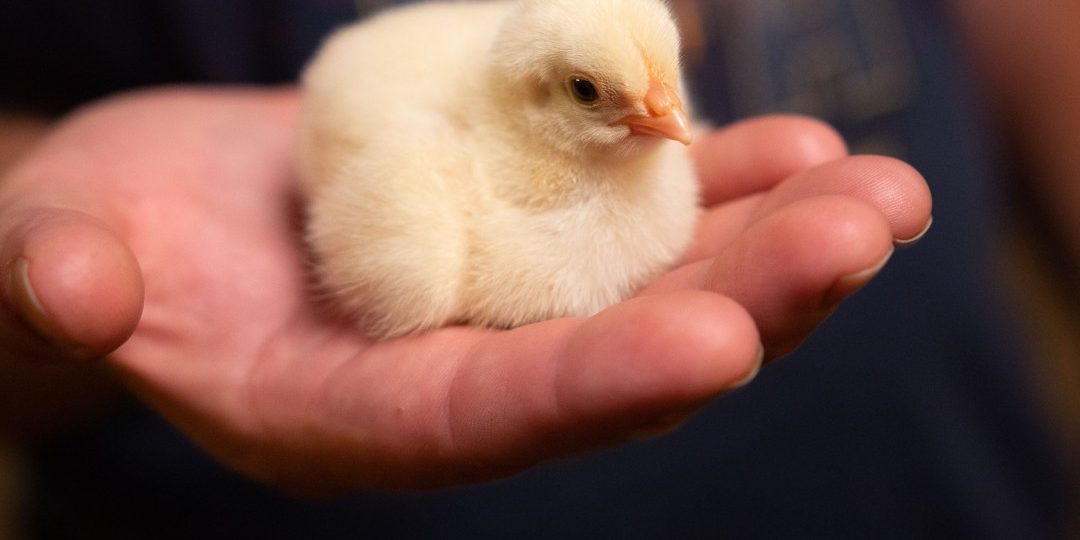Have you ever wondered about how your food gets to your plate? Have you noticed the labels on meat packages or egg cartons stating, “raised humanely” or “cage-free”? You may have even seen measures on your ballot about how animals in your state should be raised for food. Whether you know it or not, we are all involved in animal welfare, but there may be some confusion about what that term means.
How livestock animals are raised is a hot topic with consumers, those directly involved in animal agriculture, and those who don’t want animals to be raised for food. At one time or another, you have probably had the topic come up of livestock animals and how they are raised. This may have been through news articles, billboards, face-to-face questions, and more recently memes.
In the last year, we’ve seen news articles about animal rights activists’ protests, endorsed legislation, stealing livestock from farms, or even super gluing themselves to things to make a statement. On the other hand, you may know a farmer or hear a farm family’s story about how they truly care for the livestock they raise. Between the two sides, you may have come to the point of questioning what really goes on or how your food is raised.
This all comes down to animal welfare, but how does it differ from animal “rights”? Most of the time, the term “animal welfare” gets thrown around a lot in those conversations, but not in the correct context. This leads to many misconceptions about what animal welfare practices are, what it means, and their importance in animal agriculture. After having attended several animal rights conferences, I have been able to see the difference between animal welfare and animal rights more clearly than I ever had before.
What is Animal Welfare?
Animal welfare refers to the state of the animal and how well the animal is able to cope with its living conditions. “Good animal welfare” generally characterizes the parameters by which the animal is healthy, comfortable, well-nourished, able to express natural behavior, and not suffering from unpleasant states including pain, fear, or distress. Animal welfare is the aggregate of animal husbandry skills to provide for the animal.

The key to good animal welfare is the knowledge and experience with that specie of animal to understand what their biological needs are and their behavioral patterns. For example, cattle have different needs and biological processes than pigs or horses do, so they need to be cared for to meet those needs. If we treated cattle like they were pigs or pigs like they were sheep or sheep like they were horses, those animals would not have their needs met and they would not be able to thrive in their environment.
Animal welfare is also able to be measured based on the parameters gained through knowledge of the animals, which leads to improvements and alterations of what to provide. For each species, there are different measurements utilized unique to them and how they operate. We could go into a full course on animal welfare and how it is determined, practiced, and measured with each specie, but essentially it is what translates into those production practices used by farmers.
Not only do good animal welfare practices help care for the animals at the highest standard, but it also enhances food safety and food quality. This is the number one goal of animal agriculture because it is of the utmost importance to utilize good animal welfare practices, enhance our livestock’s ability to adapt and thrive in their environment and provide a nutrient-packed food product to feed both the farmer, the consumer, and their families.
Now, what about Animal Rights?
“Animal Rights” is a political and social movement that holds the belief that all animals have rights that belong to them to be free from any human service including hunting, research, and food. Regarding domestic livestock, animal rights organizations and activists seek to remove animal proteins completely from the human diet. Many animal rights organizations throughout the country push for legislation and regulations to move toward this end goal. According to animal rights activists, they choose not to distinguish between human and animal rights. Some may even refer to animals as “people” or “beyond-human relatives,” as Eloisa Trinidad of the Vegan Activist Alliance and Chilis on Wheels stated in July 2022.
Animal rights do not distinguish between species but believe that all species, including humans, should be treated the same way. Remember how animal welfare treats each specie as its own unique group to provide them the resources they need to thrive and the best care? The animal rights movement makes a blanket statement across all. The animal rights movement is doing a lot to gain traction in the headlines, but most consumers and even some farmers don’t know what animal rights activism truly is outside of what they see in the news.
Sitting in on the animal rights conversation
You know the saying, “There are two sides to every story”? Well, that greatly applies to cases of animal welfare versus animal rights. This past summer, I went to several animal rights conferences to solely observe and take notes including the Humane Society of the United States (HSUS) Taking Action for Animals Conference (TAFA) and the Rancher Advocacy Program (RAP) Summit.

While I have always known the side of animal agriculture, it is always good to listen to alternative views. As a person who grew up raising farm animals and being around the animal ag community, I thought it would be interesting to hear what they generally had to say about livestock being raised for food. As a student in Animal Science and more specifically focusing on Animal Well-being, I was more interested to see what welfare practices would be brought up and how they would be presented. Like I had expected, when it came to farm animals, the majority were perpetuated misconceptions used to appeal to the emotions of the crowd and the rest were outright lies. Just because I had expected it, doesn’t mean that most of what they said didn’t come as a shock.
After the first day of the HSUS Taking Action for Animals Conference, it became apparent that most of the people there had never seen a farm animal in person, let alone seen how they were cared for. Many people in attendance were brought into the movement by their love of wildlife or their dogs and cats, but they did not have the background information on actual farm practices and why they were used.
“After all, farm animals are just like animals in our homes.”
– Josh Balk, HSUS (2022, TAFA)
Regarding domestic livestock, the term “animal welfare” was brought up a lot in these two conferences alone, but not in the context of its actual meaning. The speakers explained how they were using the term “animal welfare” to take a stair step approach toward more legislation and regulations to eventually get closer and closer to removing animals as a food source completely. The reasons for these legal advancements and regulations weren’t based on measures of animal welfare but on the comparison to household pets like dogs. Measurement of animal welfare and the study of the individual species were not really considered in these sessions. On top of that, the majority of the cases or examples brought up were from other countries where the production practices do not meet the set U.S. standards for our food system.
“My goal is the abolition of all animal agriculture.”
– John “J.P.” Goodwin, HSUS
These conferences were enlightening because they really showed me how much manipulation of the consumer was going on to push the vegan agenda. At the RAP Summit, Jane Velez-Mitchell from UnChained TV explained their strategy to bring more people to be vegan through streaming services:
“What we’re doing is trying to reach non-vegan eyeballs. And so, we try to attract them with fun and interesting compelling cooking shows, music videos, documentaries, talk shows, etc.”
– Jane Velez-Mitchell

At the HSUS TAFA conference, there were many sessions and interactions I had that were truly concerning for me, but the last session I attended provided some insight into how superficial the movement was for animal “protection.” It was a session on horses and horse slaughter, which activists were able to get temporarily banned from the US several years back. At the end of the session, a lady in front of me stood up and asked what happened to all the horses that could no longer go to slaughter. The speaker, Keith Dane from HSUS, responded with, “What happened to those horses? They didn’t go to slaughter; they found a home.” Since horse slaughter was banned, ALL of these animals did not find a home. Many, in fact, were turned loose to attempt to let them survive on their own and ended up starving to death, but that was avoided in the session. He even told the audience they could go to livestock auctions to out-bid other buyers who may take them to slaughter. Anyone who has ever raised horses or known someone with them, knows horses are one of the more expensive and demanding species when it comes to proper nutrition, health, and management. The majority of the people in that room had no resources, space, or means to truly care for a horse, which would lead to poor animal welfare and the horse suffering the consequences. To further that discussion, another representative from HSUS expressed her distaste for the trailer used for transport in a picture of horses in Mexico stating it was just more “‘inhumane’ treatment [she] didn’t even know about.” So, not only did the audience members likely not have the space or resources to care for a horse in a proper environment, but they also would not be able to transport it home.
Which way to go: Animal Rights or Animal Welfare?
Animal welfare is the ultimate goal of the food producer, whether that is a rancher or a farmer. There are Quality Assurance programs and educational resources that provide training for farmers and their employees to utilize proper animal handling and husbandry techniques. Farmers may even be audited by such standards of care.
While there are bad apples in every industry, many of these “bad apples,” as animal rights activists have portrayed, have actually been production practices that get twisted and misconstrued through the biased message aimed to appeal to consumers’ emotions. At other times, some “undercover” animal rights activists will even go to the lengths of staging their “photo-op” to get the footage they want when they aren’t able to coerce farmers into actions that put the animals at risk. In all reality, it is not the goal of animal rights activists to improve the lives of animals but to completely end animal agriculture through strategy and tactics.
“Sometimes you have to be aggressive, and it doesn’t matter what form.”
– Inga Fricke, HSUS
“We are trying to destroy animal agriculture.”
– Wayne Hsiung, Direct Action Everywhere
These tactics can include celebrity activism, mass protests, social media, food or health scares, ballot initiatives and legislation, and pressure campaigns on different brands. What many people don’t understand is that while the movement seems like it is warm and fuzzy on the inside to “protect” animals, many organizations encourage people or seek to steal livestock from farms, which puts the animals at risk more than anything.

The sad thing I continue to see is that most of the time the animal rights movement takes production practices meant to help the animals based on animal welfare measures and misconstrues them. There is a multitude of ways activists and activist organizations try to gain public backing and most of it, when it comes to animal agriculture, is taken out of context or used to mislead. While at the conferences, I saw a lot of these misconceptions being spun or an animal’s behavior being taken out of context in the hopes to rile people up to vote and lobby a certain way.
“We’re preying on emotions to push our vegan agenda.”
– David Coman-Hidy, formerly with The Humane League
Have questions? Ask a farmer!
While animal rights may sound like a good cause claiming to improve the lives of animals, many times, especially with food animals, it does the opposite. This comes back to good animal welfare practices because the first step is to know the animals themselves and their needs. Animal rights activists don’t take the species themselves into account, whereas the goal of farmers is to provide them with comfort, provide health management, and provide for their physiological needs to thrive and survive.

Without their livestock thriving, farmers would not be able to keep their farms operating. Through research and based on knowledge of the animals, we are continuously searching for improved methods to raise our animals and have them be in a good state of being. This has led to the evolution of modern agriculture to the point that animals are healthier, more comfortable, and more efficient than ever before.
Most of the time, farmers, ranchers, or others involved in animal agriculture don’t have the time or the means to share their stories or why they do what they do. In all reality, farming and ranching is a lifestyle – it is 24/7/365 with no off days or holidays. The animals and their needs come first on the farm. According to Lora Wright, a third-generation dairy farmer and law student,
“Dairy farming means caring for our livestock like they are family. They are our pride and joy and always eat before we do.”
I could go on for days, but animal welfare is crucial to our food system and the care of our livestock. By utilizing research, technology, improved management practices, measures of animal physiology and behavior, advanced diets and knowledge of the nutritional needs, and so much more, we’re able to provide our livestock with the resources they need at the highest standard and provide a safe and nutritious product to the consumer. So next time you have a question about something you see or a farming practice you’re not sure of, just ask a farmer!
This blog post was written by Alexis Main and is one of the top five College Aggies Online blogs from 2022.
All posts are the opinion of the author and do not necessarily represent the view of the Animal Ag Alliance.







